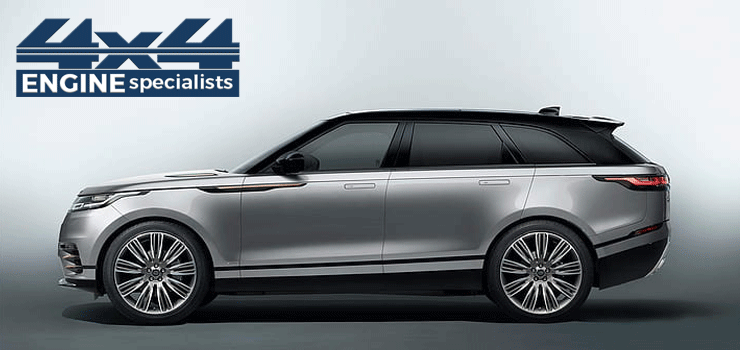Introduction
In the realm of automotive engineering, the pursuit of fuel efficiency has become paramount, driven by environmental concerns and the need to optimize resources. Range Rover, a marque known for luxury and performance, has made significant strides in this arena with the introduction of its 2.0 engine. We delves into the advancements in fuel efficiency offered by the Range Rover 2.0 engine, exploring its innovative features and the impact it has on both driving experience and environmental sustainability.
Engine Design Evolution: From Tradition to Innovation
The journey towards enhanced fuel efficiency in the Range Rover begins with a fundamental shift in engine design philosophy. Moving away from traditional larger-displacement engines, the 2.0 engine represents a paradigm shift towards smaller, turbocharged powerplants. This evolution in design allows for a more efficient use of fuel without compromising on performance, marking a significant departure from conventional approaches.
Turbocharging Technology: Maximizing Power Output
At the heart of the Range Rover 2.0 engine lies turbocharging technology, a game-changer in the quest for fuel efficiency. By compressing intake air and increasing its density, turbochargers enable the engine to generate more power from a smaller displacement. This translates into improved fuel economy without sacrificing the exhilarating driving experience synonymous with the Range Rover brand.
Lightweight Construction: Redefining Efficiency
Innovative engineering extends beyond the internal workings of the engine to its overall construction. The Range Rover 2.0 engine incorporates lightweight materials and streamlined components, reducing overall vehicle weight and enhancing efficiency. This focus on weight optimization contributes to improved fuel economy and agility on the road, elevating the driving dynamics of the Range Rover lineup.
Advanced Fuel Injection Systems: Precision Performance
Precision is paramount in the pursuit of fuel efficiency, and the Range Rover 2.0 engine delivers on this front through advanced fuel injection systems. Utilizing cutting-edge technology, these systems precisely meter fuel delivery, optimizing combustion efficiency and minimizing waste. The result is a finely tuned engine that maximizes power output while minimizing fuel consumption, setting new standards in performance and efficiency.
Hybrid Powertrain Integration: Bridging the Gap
In keeping with the evolving landscape of automotive technology, Range Rover has embraced hybrid powertrain integration as a means to further enhance fuel efficiency. The 2.0 engine is seamlessly integrated with hybrid systems, leveraging electric propulsion to supplement traditional combustion power. This hybrid synergy not only improves fuel economy but also reduces emissions, aligning with Range Rover’s commitment to sustainability.
Intelligent Engine Management Systems: Adaptive Efficiency
The intelligence of the Range Rover 2.0 engine extends beyond its mechanical components to encompass sophisticated engine management systems. These systems employ advanced algorithms to monitor driving conditions in real-time, adjusting engine parameters for optimal efficiency. Whether cruising on the highway or navigating urban streets, the engine adapts seamlessly to deliver maximum fuel efficiency without compromising performance.
Aerodynamic Enhancements: Wind-Carving Efficiency
Efficiency in motion is not solely reliant on what occurs within the engine bay; aerodynamics play a crucial role in shaping fuel efficiency. Range Rover has invested in aerodynamic enhancements across its lineup, optimizing airflow to reduce drag and improve efficiency. From sleek body contours to active grille shutters, every aspect of the vehicle is designed to slice through the air with minimal resistance, maximizing fuel economy on every journey. Get the best details about the range rover engine here at the https://4x4enginespecialists.co.uk/ .
Continuous Innovation: Pioneering the Future
The pursuit of fuel efficiency is an ongoing journey, and Range Rover remains at the forefront of innovation in this domain. With each new iteration of the 2.0 engine, advancements are made to further push the boundaries of efficiency and performance. Whether through enhanced hybridization, improved materials, or breakthroughs in combustion technology, Range Rover continues to raise the bar for what is possible in automotive engineering.
Conclusion
The Range Rover 2.0 engine stands as a testament to the relentless pursuit of efficiency and performance in the automotive industry. Through a combination of turbocharging technology, lightweight construction, and intelligent engineering, it redefines the standards for fuel efficiency in luxury SUVs. As Range Rover continues to innovate and evolve, the 2.0 engine serves as a beacon of progress, promising a future where sustainability and driving pleasure go hand in hand. With its blend of power, efficiency, and refinement, the Range Rover 2.0 engine represents the pinnacle of automotive engineering excellence.


